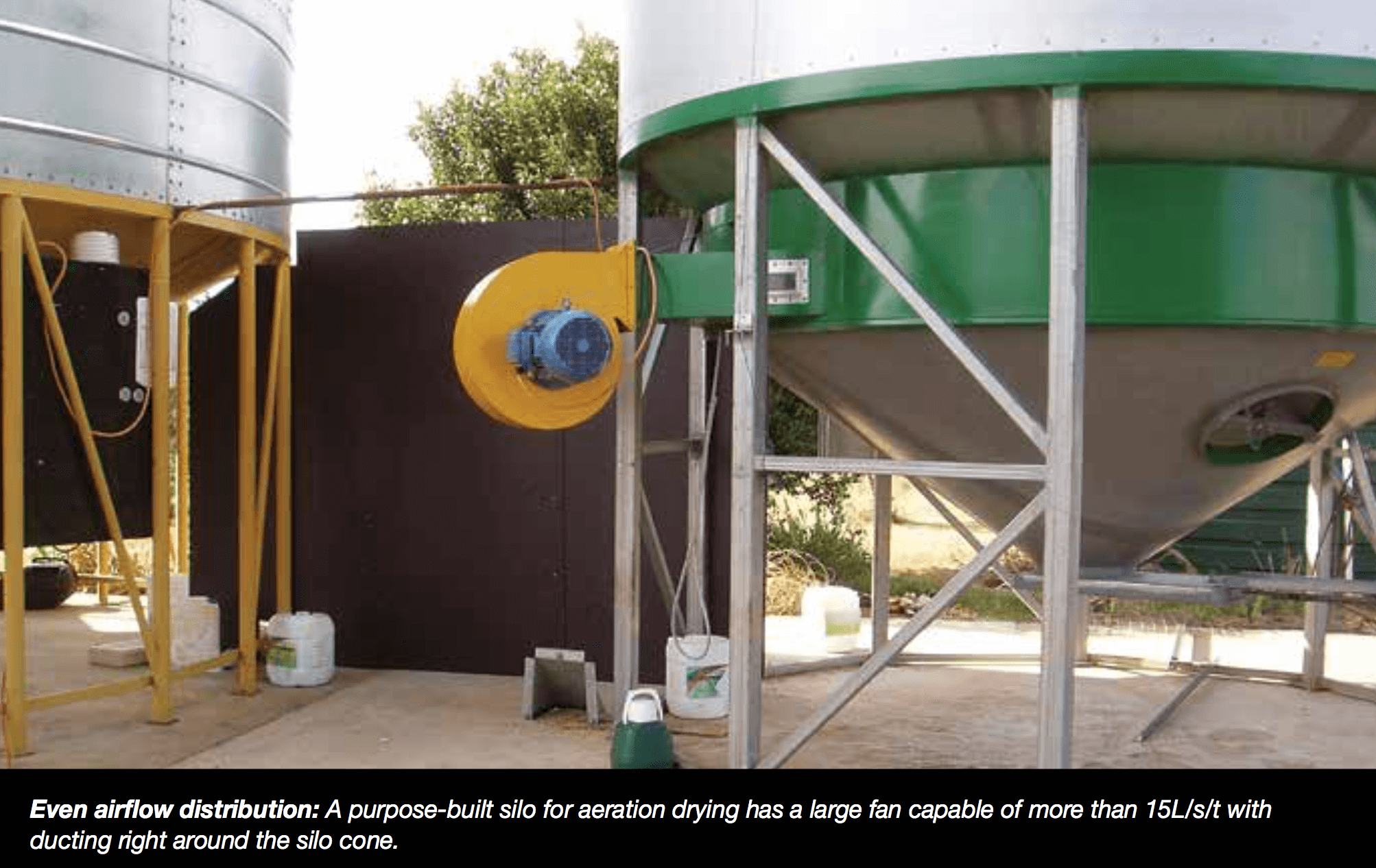
Many farmers are doing something they haven’t for years, and that’s storing grain and stock feed. When doing so, it’s important to correctly manage the ongoing storage of your grain and there are a few products on AgTech Finder that can help.
One useful solution is grain aeration, and fan and moisture control now have some very useful tech that you can plug-in to keep an eye on your grain for you. With grain aeration, if you get it right it offers harvest flexibility, increased marketing opportunities and better control of grain quality, both at harvest and during storage. As the range of chemical control options is reduced, grain aeration provides a powerful non-chemical stored grain insect management option.
Through manipulating grain temperature and moisture, aeration cools the grain stack and achieves a more uniform bulk, delivering an optimal storage environment. Not only does this inhibit insect activity, but also maintains grain quality. Correctly monitoring and controlling temperature and moisture is probably the most important ongoing management task, and good aeration that allows air to circulate around stored grain is the key to this.
Read on to learn more about the importance of air circulation...
Air circulation
Without circulation, the air surrounding the grain will reach a certain moisture level (relative humidity) and temperature that can be favourable to mould within a few days. These conditions provide an ideal environment for insects and mould to thrive and without aeration the grain is likely to maintain that temperature and moisture for months.
The storage of products like oilseeds and pulses also benefit significantly from the use of aeration and for longer term storage, aeration of these is essential. But uptake and knowledge of the methods and benefits of aeration varies from farm to farm.
Grain aeration systems
Grain aeration systems are generally set up to either dry, or cool. Up until quite recently you couldn’t get systems that did both. Setting up the functions can cause some confusion because managing the aeration system not only means creating different systems for cooling or drying, but setting the fan run times might involve setting different timings for different days and fans may need to turn on or off at different intervals.
Use the right capacity fans
Having the right capacity fans is also something that has always needed to be considered as smaller fans may not be able to push air through the grain fast enough to dry grain in the top section of a stack (and it will turn mouldy), while high capacity fans might increase grain moisture much too quickly if run when ambient conditions are above 85 per cent relative humidity.
Several solutions can help here including grain bin automation systems that dry, cool and even re-hydrate grain to your targets with precision. Visit AgTech Finder and search for grain storage solutions to learn more.
Emerging technology worth looking at...
Aeration Managers turn farmers into grain storage professionals by providing a fully automated system to control the aeration of fans. Using a unique predictive algorithm, the controller cools, dries and maintains the perfect aeration settings for your fans to keep your grain in the condition you want – or to prepare it for sale. Search AgTech Finder to find a vendor who offers this, or get in contact with us at agtechfinder@foodagility.com and we will connect you with someone in your region or state to find out more.
There is a lot to consider but having a good understanding of climate and air flow will make sure your grain stays in the condition you want it to. Afterall, the quality of your grain drastically effects what it’s worth, and having some useful tech is going to help you make better decisions when it comes time to hold or sell.



